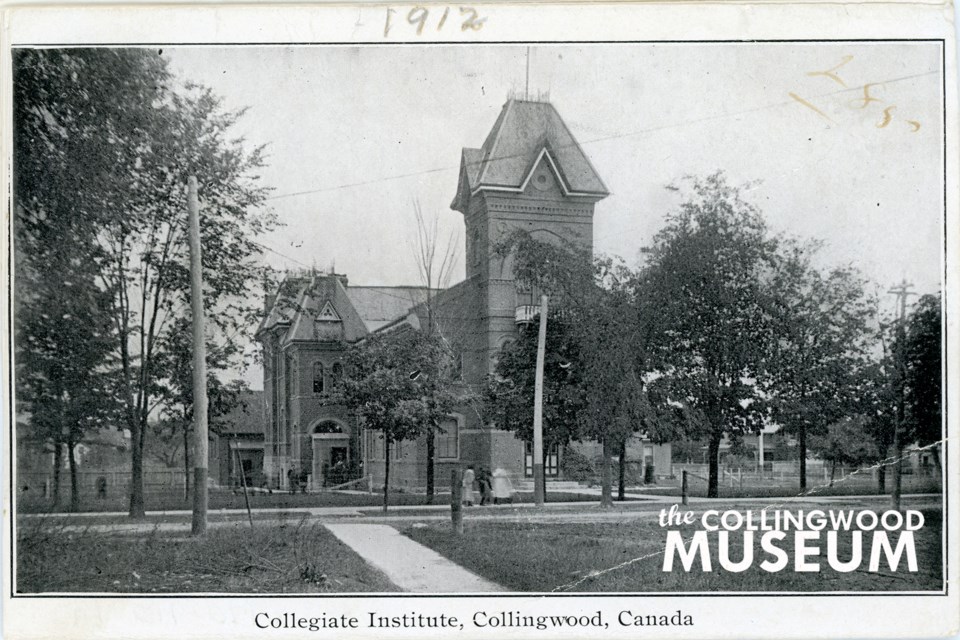This ongoing series showcases historic photos in the Collingwood Museum collection, with research and writing by Melissa Shaw, the museum supervisor.
On December 21, 1923, exactly 100 years ago to the day, Collingwood's first purpose-built high school was destroyed by a fire.
Collingwood’s original high school, which eventually became the Collingwood Collegiate Institute (CCI) of today has a long and storied history that predates the incorporation of the Town of Collingwood in 1858.
From its early start in temporary locations throughout the downtown, the school found its first permanent home in Collingwood’s original town hall, a wooden building that also hosted the Fire Brigade and Loyal Orange Lodge.
Originally known as a grammar school, male students from Collingwood’s affluent families received instruction there in math, French, and history for an annual fee.
Today, Collingwood’s original town hall stands opposite the Collingwood Museum at 38 St. Paul Street, having been moved from its original location on the south-east corner of Huron and Hurontario Streets.
In 1874, a beautiful brick building was constructed at the north-east corner of Hurontario and Hume Streets for the expressed purpose of housing Collingwood’s high school for both girls and boys.
In approximately 1879 an addition was constructed and it was around this time that the name “Collegiate” was added to the school’s name, making Collingwood the first location in Simcoe County to achieve this status.
This was a marked accomplishment in the early years of Ontario education. To be elevated from “high school” to “collegiate,” an institution had to meet specific employee and student thresholds. The school also had to provide instruction in the arts, humanities, and classics (including Latin and Greek) for students pursuing university studies.
Collingwood Collegiate Institute (CCI) became well known throughout Ontario for its educational standards due to the hard work of its staff, led by Principal William Williams from 1873 to 1901.
Despite its beautiful exterior, the school lacked certain interior amenities, such as an auditorium. As well, time took its toll, and the building became outdated and rundown.
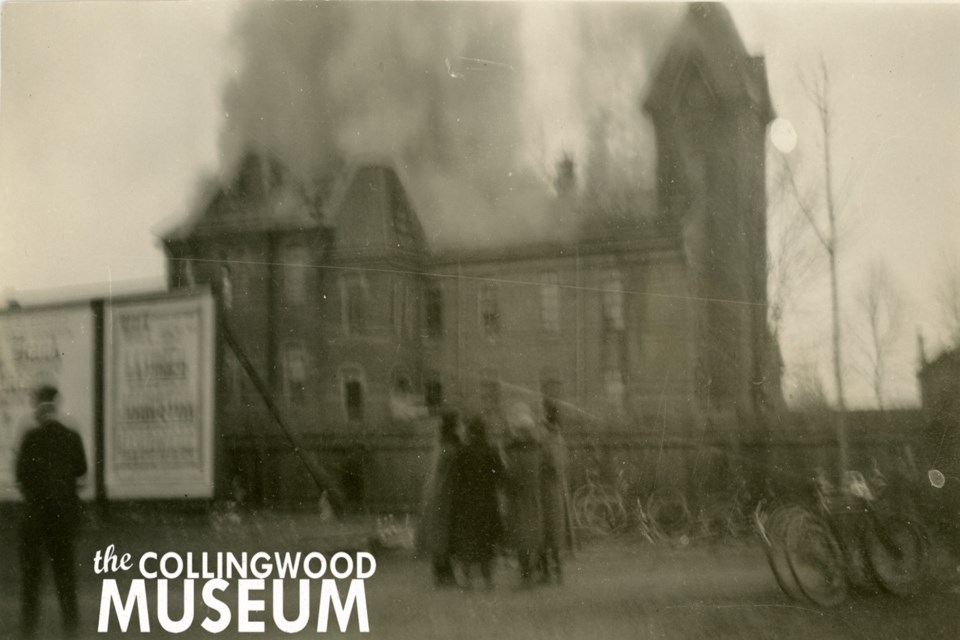
On December 21, 1923, students were holding rehearsals for the Christmas commencement ceremonies at the Opera House (the present-day location of today’s Eddie Bush Memorial Arena) when a fire broke out at the collegiate building.
The building’s caretakers, Mr. and Mrs. Grainger, were working on the second floor when smoke began streaming from the tower. The fire department responded quickly, but little could be done as the water was unable to reach the building’s roof due to poor water pressure. After 30 minutes, the roof of the main building collapsed. The addition and the tower soon followed. The fire’s origin was never determined, and the structure was deemed a total loss.
Much to the disappointment of CCI students, classes resumed on Jan. 7 at 109 Hurontario Street, on the second and third floors of the C. Stephens & Co. building. Classes continued to be held here during the construction of the new school which would take two years. Starting in April 1924, monthly fire drills were followed in case disaster struck again.
The cornerstone-laying ceremony for the new school took place on May 15, 1925. CCI’s long-serving former principal, William Williams, was in attendance, just as he had been in 1874 for the cornerstone laying of the original school building.
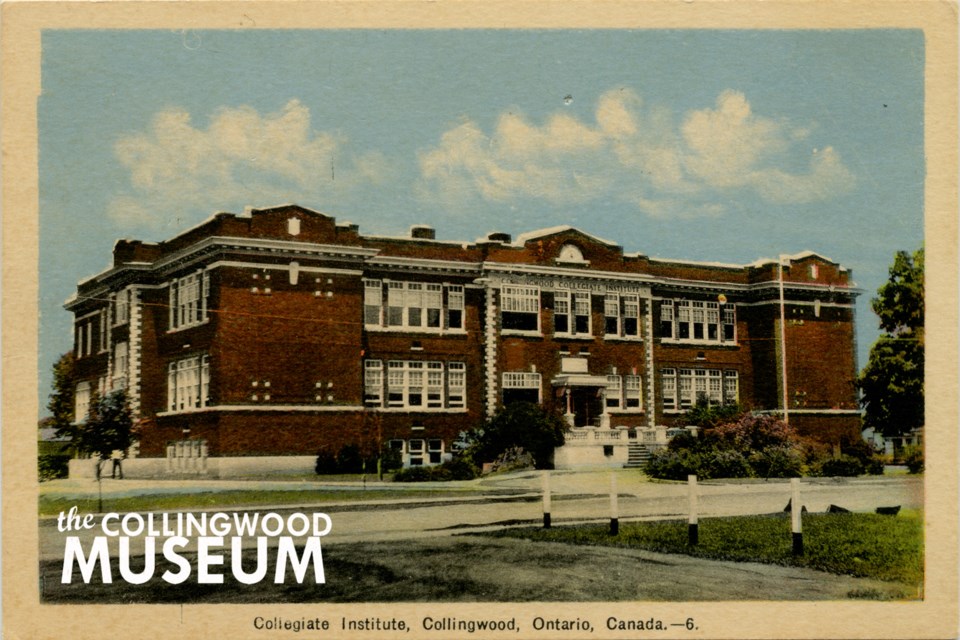
The new building officially opened on Jan. 5, 1926, welcoming 11 staff members and 700 students. The ensuing decades were difficult, with the Depression and Second World War making their marks on the community and local families.
In January 1951, CCI became known as Collingwood District Collegiate Institute (CDCI) when the school board was reorganized and students were welcomed from Creemore, Stayner, and Wasaga Beach. Just a few short years later, a much larger and modern high school would be constructed at the corner of Hurontario and Cameron Streets.
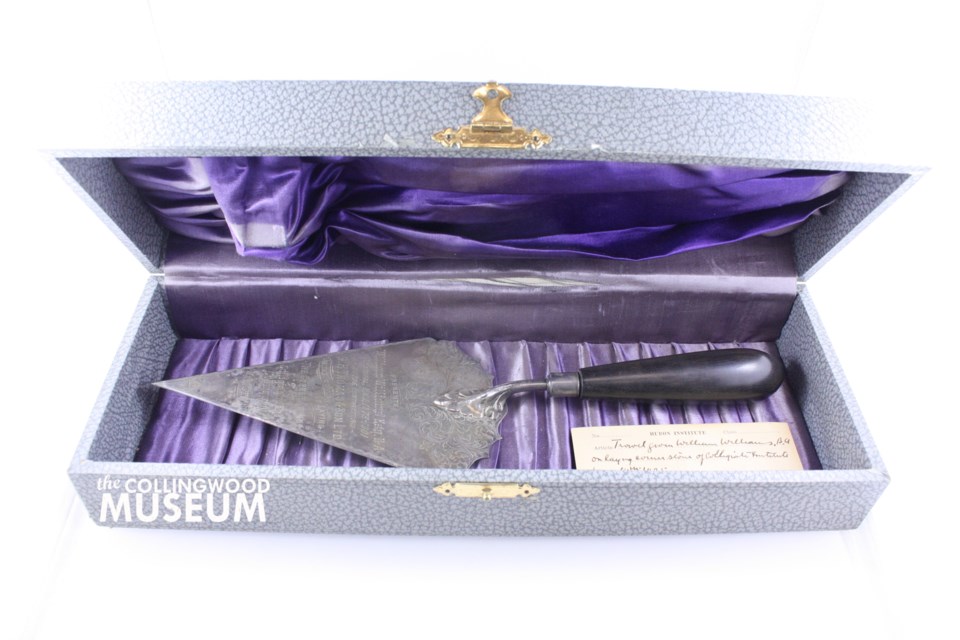
The former CCI building became a senior public school for students in grades six to eight, and finally home to Admiral Collingwood Elementary School. With the construction of a new facility for Admiral students, the old CCI building became vacant and was demolished in 2005. The site is now home to Monaco Condominiums at 1 Hume Street.
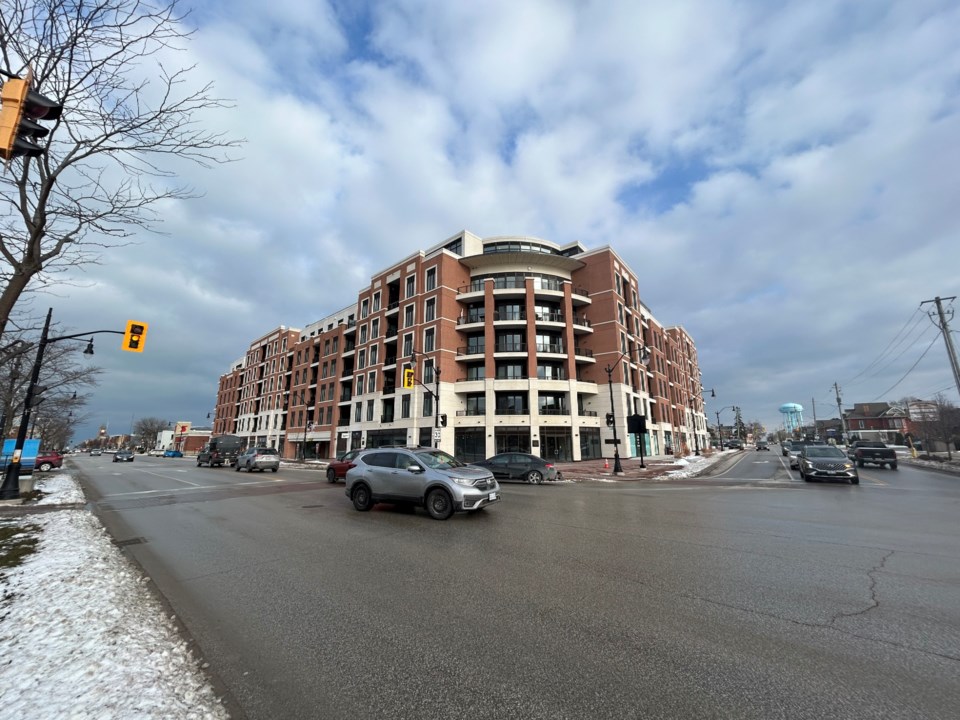
Additional photographs relating to the history of education in Collingwood are now available through the Collingwood Museum’s online collections database. More than 500 photographs are available to view from three of the Museum’s most requested collections: Historic Residences, Hurontario Street, and the Huron Institute Historical Catalogue. Begin your search now at https://collingwood.pastperfectonline.com/.
